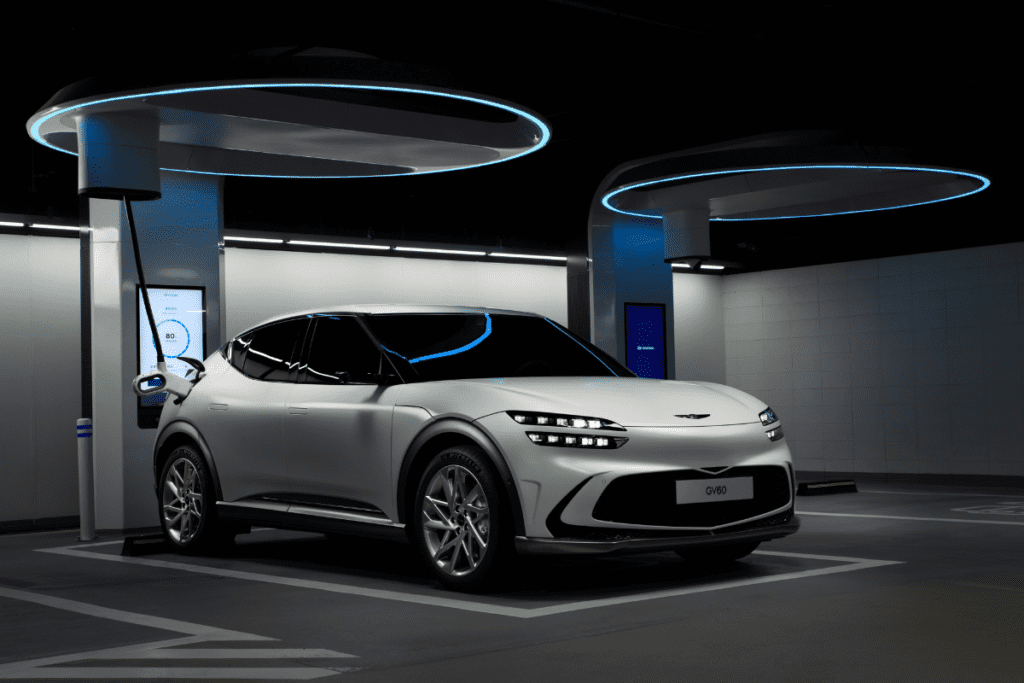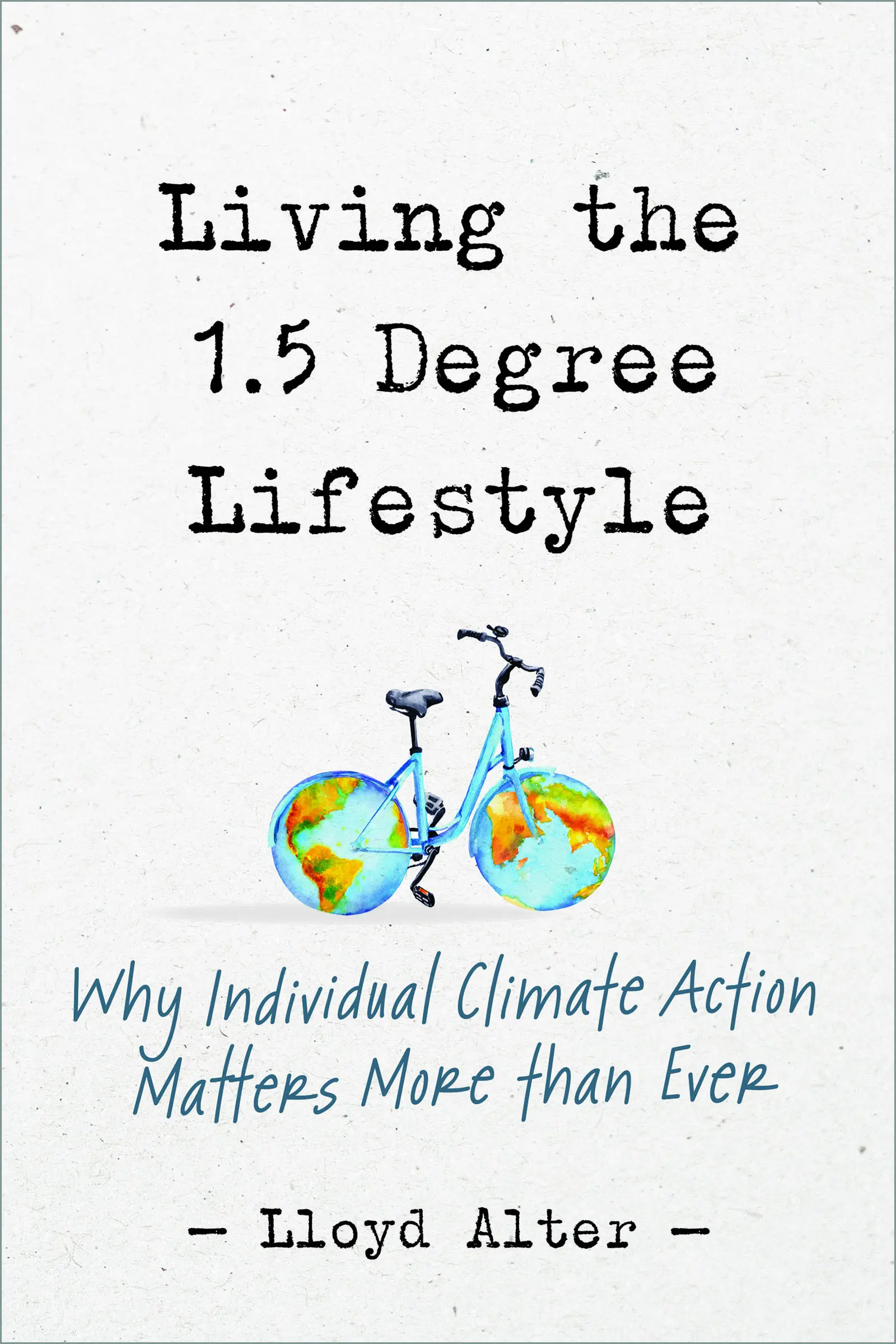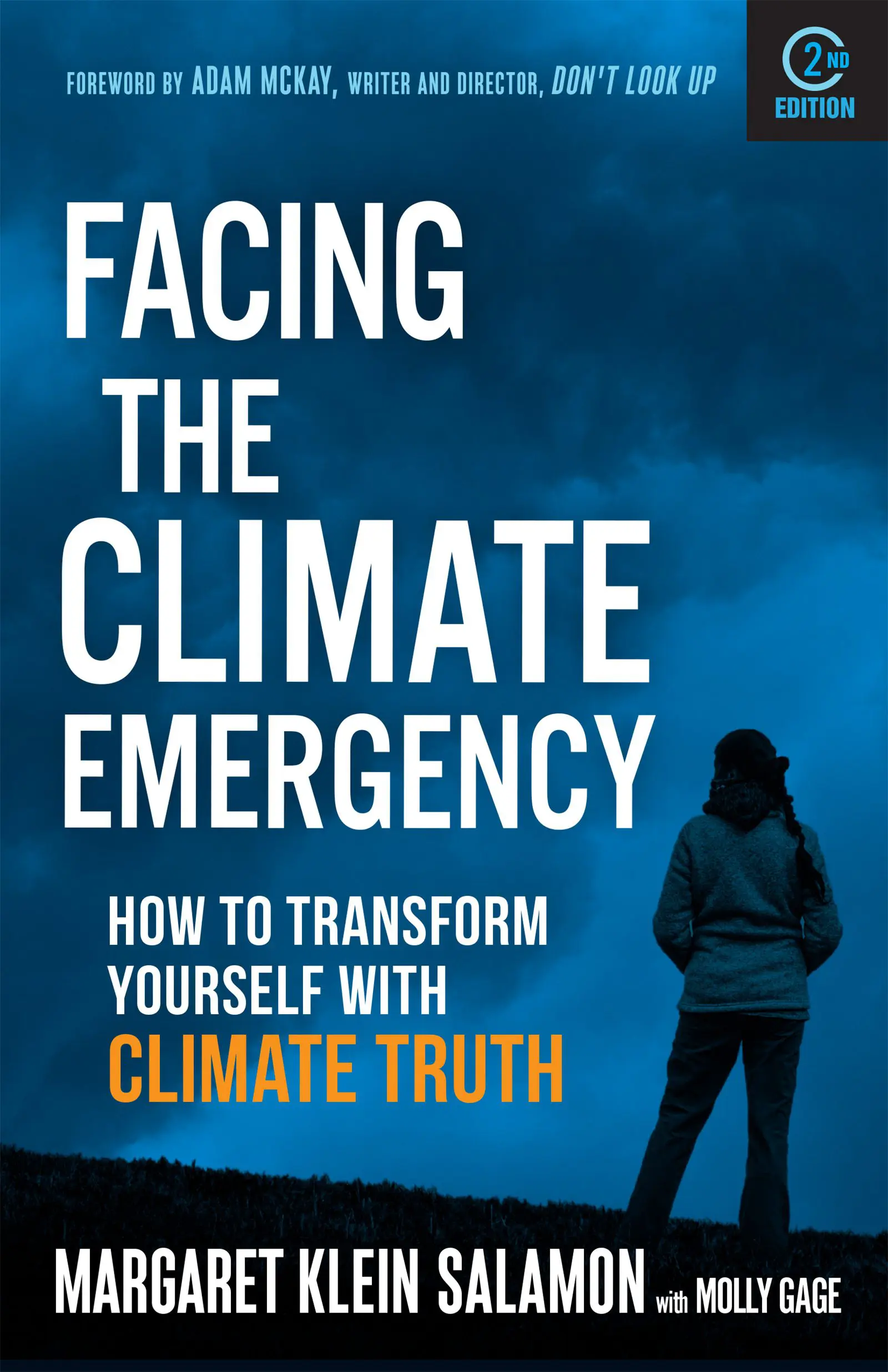
For Lloyd Alter, the answer to mitigating climate change is relatively simple: consume less carbon on both a personal and collective scale. In The Story of Upfront Carbon, he explains how the upfront carbon it takes to keep consuming as we have been, swapping renewables for fossil fuels, won’t work — there aren’t enough resources left, and, more pressingly, there isn’t enough time left for those changes to be made in time to meet crucial climate targets.
In this excerpt, Alter outlines the two sides of the carbon-emission reduction battleground – the supply side and the demand side – and why one might be the more important one to pay attention to in order to mitigate climate change.
The Future We Want: Supply vs Demand
When Elon Musk announced his new solar shingle a few years ago, he stood in front of a rendering of a house on a suburban lot with the solar shingle roof, a Tesla car and Powerwall battery in the garage, and a banner headline over the top: THE FUTURE WE WANT.
Musk is a “supply-side” kind of guy. He wants to make stuff and sell it to you, claiming this is the way we will get off fossil fuels.
More recently, MacArthur Prize winner, inventor, and entrepreneur Saul Griffith and the organization he founded, Rewire America, have been pitching “electrify everything,” where we can have it all: “Same-sized homes. Same-sized cars. Same levels of comfort. Just electric.” David Roberts of Vox is all in for this, calling it “the story that needs to be told about tackling climate change. Not a story of privation or giving things up. Not a story of economic decline or inexorable ecological doom. A story about a better, electrified future that is already on the way.”

Griffith and Roberts are also supply-side guys (they are almost always guys), envisioning a world of renewable power feeding our single-family suburban homes with solar panels on the roof and electric cars in the garage. The problem with almost all of the supply-sider solutions is that they don’t scale; there is not enough lithium, copper, space, money or, most importantly, time. And of course, they have not even thought about the upfront carbon emissions of it all.
Then there are the demand-side guys, who believe that we have to stop consuming so many resources and have to reduce the demand for energy and fossil fuels. Engineer Nick Grant thinks they are two different personality types:
My hunch is that the world is divided into “less is more” demand-side people, who focus on reducing their demand for emissions-heavy products and processes, and “less is a bore” supply-side people, who look for solutions within the sector that emits them— it is a personality trait.

Demand-siders dream of bicycling to small homes that keep warm from body heat. This is not Robert’s “story of economic decline,” but a positive vision that is achievable. But it’s boring. Grant notes that a friend of his with a roof covered in solar panels brags about how much money he saves, but that there is no such excitement from sealing air leaks. Solar panels and batteries are expensive, and, to a certain extent, are what Thorstein Veblen might have called conspicuous consumption, while insulation and air sealing is invisible and inconspicuous. Grant wrote in his 2012 article for Building Design:
I suggest that if we continue to prioritise a supply-side approach, we will be locked into a spiral of increased consumption. We can cover all surfaces with PV, cut down all the forests for biomass, plant palm oil to fuel our vehicles and install heat pumps in all buildings, but demand will always be just ahead of supply. Success should not be judged by the amount of green kit installed but by how close to sustainable levels of consumption we get.

Grant wrote this a decade ago, before upfront carbon was on the radar, which significantly changed our understanding of sustainable levels of consumption. He concludes: “We need to rethink our entire approach and match demand to supply rather than fleeing into the future in a futile attempt to match supply to demand.”
More recently, geologist Simon Michaux calculated the amount of material needed to make all the stuff required to electrify everything. The numbers are vast; with lithium alone “so enormous, it becomes now appropriate to ask if it is even possible in the context of mineral reserves available, as this far exceeds global reserves and is not practical.” He also concludes that the only solution is to reduce demand.
Replacing the existing fossil fuel powered system (oil, gas, and coal), using renewable technologies, such as solar panels or wind turbines, will not be possible for the entire global human population. There is simply just not enough time, nor resources to do this by the current target set by the world’s most influential nations. What may be required, therefore, is a significant reduction of societal demand for all resources, of all kinds. This implies a very different social contract and a radically different system of governance to what is in place today.
Rethinking our approach means drastically reducing demand, which also requires a change in mindset, a change in the way we live. As Grant says, a change in our approach. As Michaux says, a different social contract.

Elon Musk sells cars, batteries, and solar roofs; Saul Griffith started companies that sell heat pumps and battery-boosted induction ranges. They believe that this is the future we want. It may well be, but it is an expensive future accessible and affordable for a small group of people with big rooftops. It’s a future that very few people can have, and it’s not the future we need.








